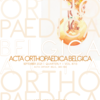Associations between biomarkers and histological assessment in individual animals in a destabilization of the medial meniscus (DMM) model of osteoarthritis (OA)
osteoarthritis ; biomarker ; destabilization of the medial meniscus
Published online: Feb 16 2022
Abstract
To date, the use of biomarkers for assessing individual severity of osteoarthritis (OA) is limited, and the correlation of histological scores with biomarkers for individual animals in the destabilization of the medial meniscus (DMM) model of OA has not been well investigated. Accordingly, this study investigated how well representative biomarkers in the DMM model reflected specific changes in individual animals.
Rats were randomly divided into the OA group and the sham group. OA model was established by destabilization of the medial meniscus (DMM). After 2,4,6,8,10 and 12 weeks (n=14, each week), the concentrations of CTXII, COMP, C2C, and OC in serum were measured, and cartilage degeneration, osteophytes, and synovial membrane inflammation, typical of OA, were scored using Osteoarthritis Research Society International (OARSI) scoring system. Additionally, the correlation between each biomarker and the specific changes in osteoarthritis was analyzed for individual animals using the Generalized Estimating Equation (GEE).
Statistical analysis showed a low correlation between CTXII and osteophyte score of the medial femur (coefficient = -0.0088, p= 0.0103), COMP and osteophyte score of the medial tibia (coefficient = -0.0911, p= 0.0003), and C2C and synovial membrane inflammation scores of the medial femoral (coefficient = 0.054, p= 0.0131).
These results suggest that representative OA bio- markers in individual animals in the DMM model did not reflect histological scores well.
